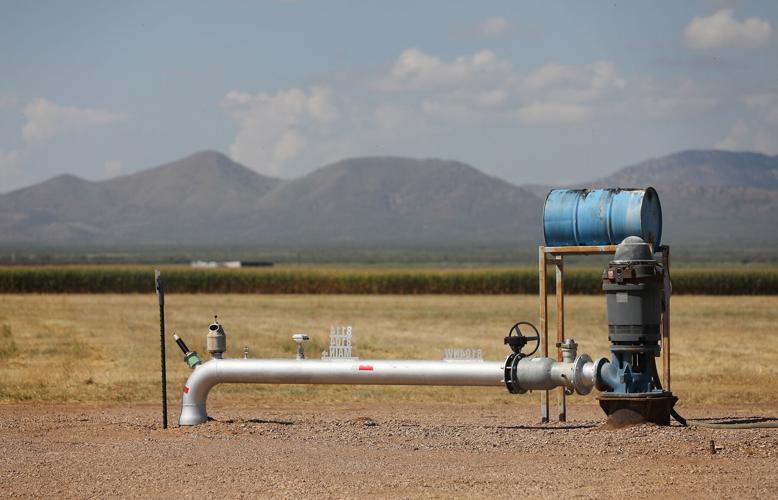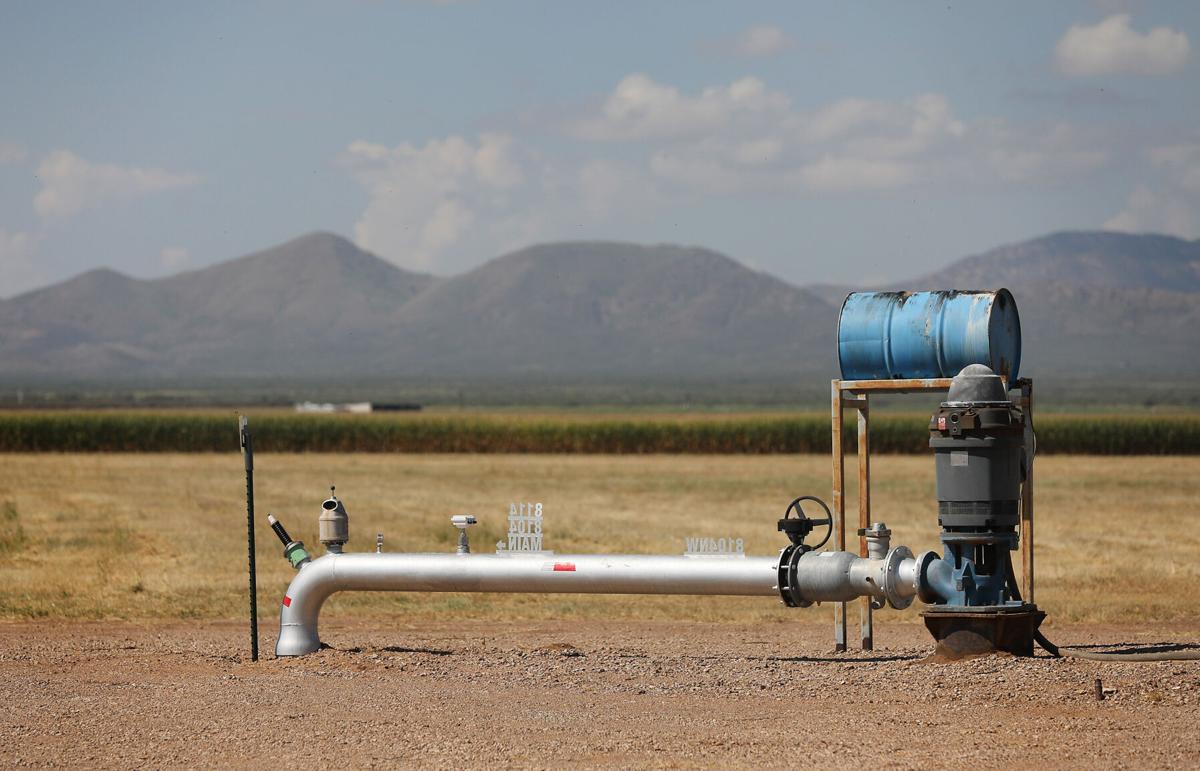PHOENIX — It’s taken four decades, Saudi cows munching on alfalfa grown with Arizona water and national headlines about whether Arizona is finally drying up.
But state lawmakers appear to finally be ready to update the 1980 Groundwater Act to plug the holes it left — even as Gov. Katie Hobbs considers a recommendation from her Water Policy Council to approve what could be a new exception.
Resolving some of the issues over requirements for adequate water supplies could in turn help alleviate the state’s other pressing problem of affordable housing.
It all comes down to the requirement in the groundwater law that new homes built in “active management areas’’ have a 100-year assured water supply. The idea was to wean development away from groundwater.
Only thing is, state law designated just five management areas: Tucson, Phoenix, Prescott, Pinal and Santa Cruz.
There is an option for area residents to create their own through petition and election, as occurred in 2022 in the Douglas area. A similar election was defeated in the Willcox basin.
And there are whole areas of the state with no limits on groundwater pumping.
That has become increasingly clear in recent years as corporate farms, made aware of the lack of pumping limits, have bought or leased land in rural areas.
The most prominent example was Fondomonte, a subsidy of the Saudi dairy company Almarai, which has been growing alfalfa on Arizona groundwater to feed cattle in the kingdom which, being a desert, does not allow such pumping.
Other examples include U.S. Farming Realty Trust, which purchased about 20 square miles of land in La Paz County. That firm then leased some of the land to Al Dahra Farms, based in the United Arab Emirates, which grows hay that gets shipped to countries in the Middle East and Asia.
That whole purchase was financed in part by a 2012 investment of $175 million by the Arizona State Retirement Fund.
Creating a statewide active management area does not appear to be feasible.
So lawmakers are being presented with a proposal to allow local officials or the Arizona Department of Water Resources to form some sort of “rural groundwater management area’’ that would come up with a plan to deal with groundwater overdraft, or depletion of water that isn’t replenished. At the very least it would mandate reporting and monitoring of existing pumping, which are not now required.
The big opposition could come from the Arizona Farm Bureau. Stefanie Smallhouse, its president, said there is a concern any plans to regulate agriculture would override the interests of farmers who have been on the land for generations.
Other water issues
Also likely to force legislative attention was the announcement by the Arizona Department of Water Resources in May it won’t issue any permits for new subdivisions in certain areas on the fringes of Phoenix.
That came after a new analysis of the groundwater in the basin showed there simply won’t be enough to provide the legally required 100-year supply. And while that didn’t affect cities served by water companies with their own assured supply, it halted development in other areas around Buckeye and Queen Creek.
That move drew derision from Senate President Warren Petersen, who said that 100-year number — a figure that goes back even before the 1980 law — was “arbitrary.’’ But the Gilbert Republican said he has no interest in trying to repeal it.
What is more likely to happen could best be described as a “work around.’’
A proposal from the Water Policy Council to Hobbs would allow developers to get credit for “new alternative supplies’’ obtained from other source, such as effluent or surface water from those who have the rights to it. But it is meant to be temporary, giving the go-ahead for new home construction in the affected areas while developers find a more permanent water source, including a steady and readily available supply of treated effluent.
This change could be ordered by the governor, without the need for legislation.
Lawmakers also are being asked to address exceptions to the requirement for an assured water supply in the 1980 law.
The most notable is that it applies only to owner-occupied properties. That means anything constructed as a rental — including entire “build-to-rent’’ subdivisions — are exempt from having to show they have necessary water.
Affordable housing
The water issue is tracking closely with the issue of affordable housing.
Last month, the Home Builders Association of Central Arizona lashed out at the Arizona Department of Water Resources for what it calls a “moratorium on home building in the most affordable parts of the (Phoenix) Valley.’’ The builders claim the state action is leading to rapidly escalating home prices.
Solving the affordability problem, though, will require more than just letting developers put up more single-family homes in the far suburbs of Phoenix.

Resolving some of the issues over requirements for adequate water supplies could in turn help alleviate the state's other pressing problem of affordable housing. Among issues expected to be debated are zoning laws, mortgage help for first-time homebuyers, and strategies to make more rentals available.
A big part of that is zoning — an issue that often pits cities and their existing residents, who want the character of their neighborhoods preserved, against those who want more affordable housing.
One of the more radical ideas includes “zoning by right.’’ It would allow some landowners to convert the use of their property from how it was zoned to something else, all without having to first get city approval.
It also includes having the state — and not local governments — set standards for zoning, requiring cities and towns to allow a mix of more affordable development including smaller lot sizes, duplex and triplex homes, and manufactured housing.
There also are proposals to have the state help first-time homebuyers qualify for a mortgage.
Potentially more tricky is the question of affordable rents.
Some Democrats want to repeal a ban on city rent caps or control. But that is unlikely to go far in the Republican-controlled Legislature.
A more likely scenario is something to make more rental units available.
One part of that involves casitas, legally referred to as “auxiliary dwelling units,’’ that homeowners could build in their yards without running afoul of zoning regulations that allow only one house on a lot. Several cities, including Tucson and Phoenix, already are moving ahead on that, without state mandates.
But some lawmakers are having second thoughts on a 2016 law that stripped local communities of their ability to regulate short-term “vacation rentals.’’
It was sold by then-Gov. Doug Ducey as a way to let a homeowner make a little extra cash by renting out a bedroom to a winter visitor or during a national sporting event. But the reality proved far different, with individuals and companies buying up homes in neighborhoods for the sole purpose of making them vacation rentals, taking then off the market for local residents looking for a place to live.
Teacher pay
Lawmakers also appear ready to make a major investment in teacher salaries.
The Legislature approved a plan in 2018 that was supposed to provide an average 20% pay raise to teachers over a four-year span. But the measure lacked teeth and some districts used the extra cash for other expenses.

Lawmakers also appear ready to make a major investment in teacher salaries. The National Education Association says the average Arizona teacher salary ranks 32nd in the nation. Legislative leaders are proposing $4,000 across-the-board raises.
Even with the raises, the most recent figure from the National Education Association puts the average Arizona teacher salary at $56,775, which it says ranks 32nd in the nation. State schools chief Tom Horne said Arizona loses about 40% of new teachers within their first four years.
The new plan being pushed by Republicans would leverage some of the cash inside a special state land trust account to provide $4,000 across-the-board raises. The money would be earmarked solely for teacher salaries and could not be siphoned off for any other use.
There are some unanswered questions, including the fact that those extra trust dollars — about $350 million a year — already are being set aside for K-12 education. Any plan to extend the diversion past 2025, when it is set to expire, would need voter approval.
Abortion laws
One other issue could elbow its way to the top of the legislative agenda: abortion.
When the U.S. Supreme Court overturned Roe vs. Wade in 2022, a Pima County Superior Court judge ruled that automatically revived a territorial-era law — never repealed after Roe — that outlaws the procedure in Arizona except to save the life of the mother.
But Planned Parenthood Arizona pointed out that abortion foes at the Legislature in 2022 approved a 15-week ban, a measure designed to be in place had the U.S. justices simply upheld a nearly identical Mississippi law instead of overturning Roe.
The Court of Appeals ruled the 15-week law takes precedence over the territorial-era ban. Now the issue is before the Arizona Supreme Court.
A potential dilemma for anti-abortion lawmakers comes if the Arizona Supreme Court ultimately rules the territorial-era law is the one that takes precedence.
That’s because a group is circulating petitions that would ask voters to enshrine the right of abortion into the Arizona Constitution. That would permit the procedure up until fetal viability — generally considered between 22 and 24 weeks, as it was before Roe was overturned — but with allowances to terminate a pregnancy beyond that to protect the physical or mental health of the mother.
Foes of the measure believe they can defeat it at the ballot in November as too extreme.
But it also raises the possibility voters may choose the initiative if the only other option is going back to the days when virtually all abortions were illegal. That could pressure even abortion foes to support legislation that is more moderate or to repeal the territorial-era law outright.
House Speaker Ben Toma said there is no contingency plan, calling the question “hypothetical.’’
“At this point we’re going to wait and see what the Supreme Court actually does before we decide what to do about that,’’ he said. “And so we’re not going to have any substantive discussions about that until it actually happens.’’
Petersen, the Senate President, also brushed aside similar questions as hypothetical, saying he won’t respond until there is a ruling.
The Arizona justices, who heard arguments last month, have not set a date for issuing a ruling.
Get your morning recap of today's local news and read the full stories here: tucne.ws/morning






